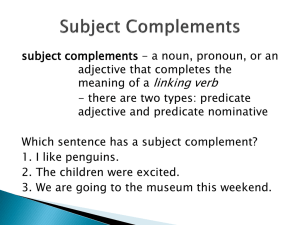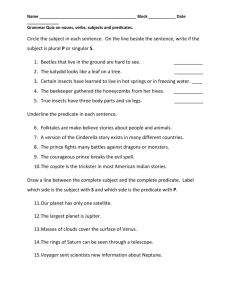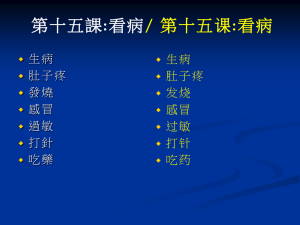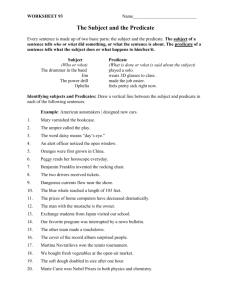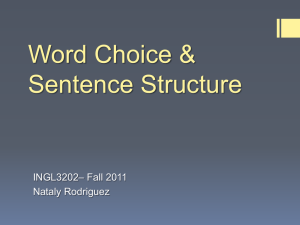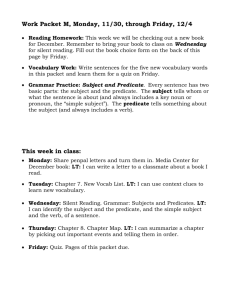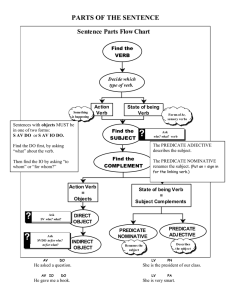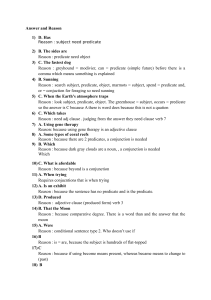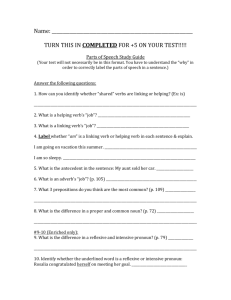Review of Sentence Structure - University of Wisconsin
advertisement
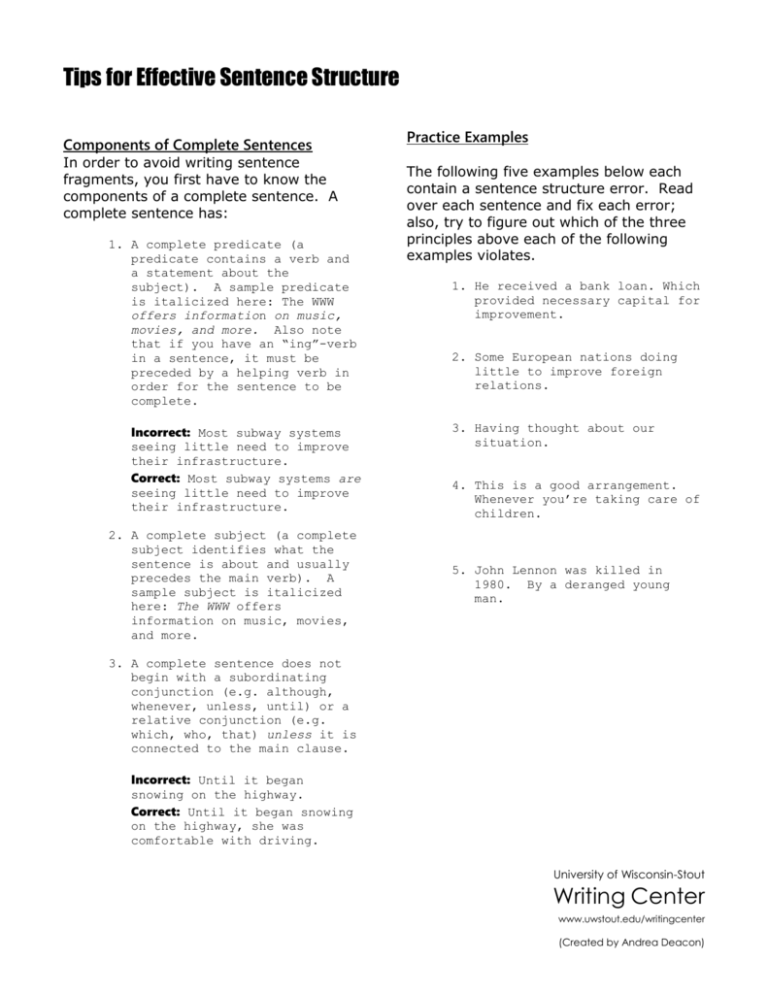
Tips for Effective Sentence Structure Components of Complete Sentences In order to avoid writing sentence fragments, you first have to know the components of a complete sentence. A complete sentence has: 1. A complete predicate (a predicate contains a verb and a statement about the subject). A sample predicate is italicized here: The WWW offers information on music, movies, and more. Also note that if you have an “ing”-verb in a sentence, it must be preceded by a helping verb in order for the sentence to be complete. Incorrect: Most subway systems seeing little need to improve their infrastructure. Correct: Most subway systems are seeing little need to improve their infrastructure. 2. A complete subject (a complete subject identifies what the sentence is about and usually precedes the main verb). A sample subject is italicized here: The WWW offers information on music, movies, and more. Practice Examples The following five examples below each contain a sentence structure error. Read over each sentence and fix each error; also, try to figure out which of the three principles above each of the following examples violates. 1. He received a bank loan. Which provided necessary capital for improvement. 2. Some European nations doing little to improve foreign relations. 3. Having thought about our situation. 4. This is a good arrangement. Whenever you’re taking care of children. 5. John Lennon was killed in 1980. By a deranged young man. 3. A complete sentence does not begin with a subordinating conjunction (e.g. although, whenever, unless, until) or a relative conjunction (e.g. which, who, that) unless it is connected to the main clause. Incorrect: Until it began snowing on the highway. Correct: Until it began snowing on the highway, she was comfortable with driving. University of Wisconsin-Stout Writing Center www.uwstout.edu/writingcenter (Created by Andrea Deacon)
